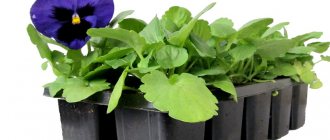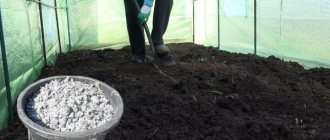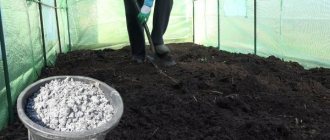A climbing rose is a spectacular garden decoration that can disguise even the most unsightly area or high wall. But in order for it to play the role of an ornamental plant, it needs to bloom properly. And flowering directly depends on the conditions of maintenance and the characteristics of caring for the shrub. Let's find out how to properly plant a climbing rose in open ground in the spring, and how to care for it so that it takes root and grows healthy.
Planting a climbing rose
Proper planting is the foundation for the health of a climbing rose. In general, the process is no different from planting any other type of rose, but there are some minor nuances.
Landing dates
Climbing roses can be planted in both autumn and spring. However, experts recommend choosing the first option: roses planted in autumn are better hardened and begin to grow faster, while spring seedlings will lag behind in development by a couple of weeks.
Autumn planting is carried out in mid-autumn (from mid-September to mid-October), when the heat has already subsided and frost has not yet set in. In this case, by the first frost, the seedlings will already have time to form young roots.
True, in northern regions with harsh winters this method is somewhat risky - young plants may die. If you are not sure that your roses will survive the winter well, it is best to play it safe and plant them in the spring, in late April - early May.
Choosing a landing site
Climbing roses love well-lit areas, so choose sunny or, in extreme cases, semi-shaded corners of the garden for the seedling.
Climbing roses are best planted on the southeast side
This crop does not tolerate excess moisture well, so you should not plant the rose in heavy clay soil with a high level of groundwater. The soil must be fertile and loose. Ideally, a plot with a slight slope to the south should be allocated for planting climbing roses.
Preparation of seedlings
It is preferable to choose self-rooted climbing rose seedlings for planting, although they develop a little slower than grafted ones.
Healthy climbing rose seedlings
A high-quality seedling should have at least 2-3 strong woody shoots. Make sure that the bark on the shoots is a healthy green color, without damage. The root system should be well developed, with a large number of thin white roots.
Before planting, the seedlings are placed in water for several hours so that they are saturated with moisture. In spring, seedlings with an open root system (that is, with bare roots) are also best placed for a day in a container with a root formation stimulator (Kornevin, Kornerost, KorneStim, Heteroauxin, etc.).
Immediately before burying the seedling in the ground, it must be trimmed a little, removing all damaged roots and slightly (by 5-10 cm) pruning old, too long rhizomes.
Before planting, seedlings with both closed and open root systems are soaked in water
If you are a beginner gardener and are not confident in your abilities, the easiest way is to choose seedlings with a closed root system (in containers). There is no need to trim them before planting. It will be enough to soak the earthen lump in water.
Before planting, make sure you buy a truly container seedling. The earthen lump should not crumble; it should be pierced by thin white roots.
Preparing the planting hole
It is worth considering that the roots of a climbing rose can penetrate the soil to a depth of 2 m. If the groundwater in your area lies high enough (higher than 2 m from the surface of the earth), before planting you need to dig a hole to a depth of 1 m and concrete it or put a stone at the bottom, and then pour a fertile layer of soil on top. This will not "miss" the roots of the rose below, and they will develop horizontally.
Before planting a climbing rose, the ground is cultivated to a depth of at least 0.7-1 m
The optimal width of the planting hole is 40-50 cm. Usually for one seedling it is enough to dig a hole with a volume of two 10-liter buckets.
The distance between rambler seedlings should be 1.5-2 m, between climber seedlings - 1-1.5 m.
When planting, keep in mind that for the winter the rose vines will have to be removed from the support and covered. Make sure there is free space next to the bush for this.
Soil for climbing roses
For lush flowering, these beauties need fertile, loose, ideally loamy soil. If the soil on your site is far from this ideal, it must be improved before planting.
Sand is added to clay soil, and a little clay is added to sandy soil. This will not affect the fertility of the soil in any way, but will help regulate its air and moisture permeability. To enrich the poor soil, black soil and vermicompost are added to it. The hole is filled approximately 2/3 with this soil mixture (so that the roots of the seedling can freely fit into it).
Fertilizers for planting climbing roses are applied to the top layer of soil
Fertilizers are added to the top layer of soil into which you will directly bury the seedling: 5 kg of rotted manure or compost, 1 cup of wood ash. You can also feed the rose with complex potassium-phosphorus fertilizers (15 g per plant). But you need to be careful with nitrogen fertilizers: they are applied only during spring planting (20 g per plant).
It is also a good idea to enrich the soil with beneficial microorganisms, which will convert substances that are “inedible” for roses into useful ones. For example, the drug Baikal EM1 contains such bacteria.
Landing technology
After the planting hole has been prepared, and the seedlings have been saturated with water and have undergone sanitary pruning, you can begin the process itself.
The depth of the seedling depends on whether it was grafted or not.
Place a layer of fertile soil at the bottom of the hole. Place the rose in the center of the hole and fill it with soil mixture and fertilizer. Plant your own rooted seedlings 5 cm deeper than they grew before; plant the grafted ones so that the grafting site is 10 cm below the soil level.
Gently compact the soil around the seedling and water well. It is also advisable to hill the rose with a mixture of soil and sand to a height of approximately 20 cm.
Selecting a location and necessary conditions
We will tell you what requirements the area where you are going to plant a climbing rose must meet.
Lighting and location
For roses, lighting is very important. They love it when the sun shines on them around the clock. However, choosing a sunny location for a climbing shrub is very difficult: after all, it is usually planted near high fences and walls that cover the space on at least one side. Then you should be guided by the fact that the morning rays of the sun are most important for rose bushes. Therefore, choose an area where sunlight will fall at least from the east, or better yet, from the southeast. Then your beauty will quickly begin to grow.
Important! In the first days after planting the rose in the ground, it will need to be shaded from the scorching rays of the sun. This will help avoid sunburn. When the bush takes root, there will be no need to shade the bush.
Temperature
The rose bush tolerates the warm Russian summer and even heat well, provided that it is watered frequently and abundantly. But in winter it is not very comfortable: most varieties of roses belong to the 5th winter hardiness zone. This means that without shelter they can survive frosts only down to -25...-20 oC. Therefore, they need to be covered for the winter.
Attention! Some varieties may belong to the 4th or even 3rd winter hardiness zone. They can withstand up to -30...-35 oC and -35...-40 oC, respectively. In the first case, the rose will only need a light shelter, and in the second, it may not be built at all (with the exception of the Urals and Siberia, where frosts often drop below -40 °C).
Air and humidity
Roses need moderately humid air (40-70%), which is maintained independently in the summer. A corner location (planting near the corner of a wall) is not suitable for climbing shrubs, as it does not tolerate drafts. It is best to plant it at a distance of 0.6 m from the middle of a wall or other support in another area protected from draft winds.
Priming
Rose bushes are best suited to light, fertile loam with good drainage and a neutral reaction. They do not tolerate close groundwater: the roots do not need to reach them, and they can grow up to 2 meters deep. If the waters are located close to the surface, and the area itself is swampy, then when constructing a planting pit, it is necessary to provide for the construction of drainage. To prevent water from stagnating in the soil, it is better to plant the rose on a slightly inclined plane.
Climbing rose watering mode
In dry weather, young plants are watered every other day, adults - every 10-12 days. One bucket (10 liters) of water is enough for one bush. In particularly dry weather, you can empty two buckets.
5 days after watering (or after rain), the soil around the bush must be loosened to prevent moisture from quickly evaporating.
Climbing roses react equally poorly to both lack and excess moisture.
If the summer is hot, you can mulch the tree trunks to prevent the plant from dehydrating.
With the end of flowering, stop frequent watering and loosening of rose bushes. This is necessary to prepare the plant for winter.
Shelter for the winter
Preparing for winter and covering climbing roses is one of the important elements of flower care. How to do it:
- At the end of August, stop watering and fertilizing the bush.
- Before frost sets in, remove the branches from the support, wrap them with rope and try to tilt them.
- If you feel that the stems may break, fix them in this position. Let the bush stand like this for 2-3 days, and then continue until it lies completely on the ground. Secure with wire or pegs.
- Sprinkle the soil around the tree trunk with fallen leaves or cover with dry soil.
- With the onset of frost, cover the bush with lutrasil. If winters in the region are cold, cover the branches with spruce branches and then wrap them with agrofibre.
- In regions with a warm climate, climbing shrubs can be covered with spruce branches, wrapped in burlap, and then with twine, without removing them from the supporting structures.
Feeding climbing roses
does not need additional feeding in the first year If desired, you can water them with mullein infusion (1:10) or chicken manure (1:20) once a season. 3-5 liters of fertilizer are poured under one bush.
In the second and subsequent years, climbing roses are fed according to the following scheme.
| Feeding time | Name of fertilizers |
| After removing the winter shelter | Ammonium nitrate (1 tbsp per bush in moist soil, after fertilizing the bush is watered) |
| 2 weeks after the first feeding | The same |
| During the budding period (April-May) | Complex nitrogen-containing fertilizers (for example, Fertika Lux at the rate of 30 g per 1 sq.m.) |
| Before flowering begins (June) | Infusion of mullein (1:10) or chicken manure (1:20) at the rate of 3-5 liters per bush |
| After the first wave of flowering (late July - early August) | A mixture of superphosphate (25 g per 10 l of water) and potassium sulfate (10 g per 10 l of water) or complex phosphorus-potassium fertilizers without nitrogen content (according to instructions) |
| After complete flowering (September) | Superphosphate (30 g per 1 sq.m.) |
Without comprehensive mineral nutrition it is difficult to achieve luxurious flowering of climbing roses
Here are some more facts you should know about feeding climbing roses:
- An excess of nitrogen can cause the rose to grow a lush green mass, but never bloom.
- Climbing roses respond very well to foliar feeding (by leaves). They are carried out in the summer and only in dry, warm weather in the morning. To avoid burning the leaves, the recommended dose of fertilizer is reduced by 2 times.
- Climbing rose bushes can be mulched with rotted manure. It is best to do this in the fall.
Care after landing
After planting a climbing rose, it needs to be provided with intensive care so that it grows faster and its shoots have time to ripen before winter hibernation. Care includes:
- Watering . Water the rose generously (10-20 liters of warm, settled water) as needed before frost sets in. In hot weather and drought, the frequency of watering should be 4-6 times a week, at other times - 2-3 times. Closer to frost, watering should be reduced to once a week.
- Feeding . If you added ash and granular fertilizers containing phosphorus and potassium to the planting hole, then 2 nitrogen fertilizations will be sufficient during the season. Young roses prefer organic matter. To do this, 2-3 weeks after planting the bush in the ground, feed it with mullein (1 part in 10 parts of water, infused for 7 days). You can also use an infusion of chicken manure (1 part to 20 parts water, infused for a week). This fertilizing needs to be repeated in mid-summer, but nitrogen cannot be added to the soil in the second half and autumn.
- Loosening and/or mulching . When a dense crust forms, it needs to be broken up. But this must be done carefully so as not to damage the roots. Instead of loosening the soil, it can be covered with a layer of mulch - pieces of bark, sawdust, decorative stones.
- Treatment for diseases . During the rainy season, spray the rose once a week with a 0.2% solution of Fundazol. The rest of the time, you can treat it once every 2 weeks with Fitosporin or Zircon to build immunity to fungal infections.
- Pest treatment . If a bush is infested with aphids, treat it with a soap solution. If other pests appear, use insecticides (Aktaru, Actellik, Chlorofos or Karbofos). The second treatment should be carried out 1 week after the first.
- Sanitary pruning . In the fall, when the first frosts arrive, the climbing rose needs to be pruned. For sanitary pruning, it is enough to remove all weak, thin, damaged and diseased shoots, as well as those that did not have time to ripen by winter. They cannot be left, as they will die in severe frosts. The same applies to flowers and leaves, if they themselves have not fallen.
- Formative pruning . It can be carried out both in spring and autumn. The rules for the procedure depend on which pruning group your rose belongs to. If flowers form on this year's shoots, then the old shoots need to be shortened greatly. And if flowering occurs only on last year’s stems, then only the top of them needs to be cut off. With a mixed type, neither old nor young shoots can be severely pruned.
- Shelter for the winter . If your rose variety is heat-loving (most likely it is), then it must be covered for the winter. There are two ways to do this. The first is to remove the canes from the support and cover them with spruce feet and a layer of waterproof material. The second is to build a frame around the rose and wrap it with roofing felt or other material. Then the void inside the frame is filled with dry leaves and covered with film on top. In any case, the trunk must be hilled up or covered with peat.
Climbing roses look very elegant. With proper care, they can bloom throughout the summer, forming lush blankets of double and fragrant flowers. With them you can disguise all unsightly areas of the garden and outbuildings. They can become the main accent and create a romantic atmosphere. But for this you need to try and give the bush all your love and care.
Rambler or Climber?
Not all novice flower growers are aware that climbing roses are divided into two large groups - ramblers (“creeping”) and climbers (“climbing”). As a result, newbies encounter unexpected problems. For example, despite feeding and reliable winter shelter, the rambler does not bloom due to excessive spring pruning. Or a naughty climber vine just doesn’t want to curl around the support.
Ramblers - classic climbing roses
Ramblers can be considered classic climbing roses. These are the kinds of shrubs that were grown in the traditional English garden 100 or 200 years ago. Climbers are hybrids of ramblers with other types of roses (for example, tea roses).
To ensure that all your efforts in caring for your rose bush are not in vain, it is important to correctly identify the group of climbing roses. To make it easier for you to do this, we have compiled a short visual table of the main differences between ramblers and climbers.
Climbers have larger flowers than ramblers
| Ramblers | Climbers | |
| Shoot length | Up to 8 m | 2-4 m |
| Bloom | Once in June-July on last year's shoots (but there are exceptions) | Single or repeated in June-August, depending on the variety, on current shoots (sometimes also on last year’s shoots) |
| Flowers | Small-flowered, double and simple, usually about 7 pieces. in inflorescence | Large-flowered, usually about 5 pieces. in inflorescence |
| Pruning requirements | When pruning, the main long shoots must be preserved, otherwise the rose will not bloom. | Strong preventive pruning is acceptable |
| Forming features | Flexible lashes can be easily formed on any support | Thick shoots practically do not bend. As a rule, they can only be twisted around a pole or thrown over a grate |
Rose growers have managed to develop several varieties of re-blooming ramblers: Super Dorothy, Snow Goose, Super Excelsa, Malvern Hills, Super Fairy, etc.
General information about the plant
Climbing roses are represented by types of rose hips and varieties of garden roses with long branching stems. There are 3 large groups of this flower culture.
Rambler
Rambler roses - climbing ones - have flexible arched or creeping shoots. Plants are bred based on species such as multiflora and Vihura. Most varieties are frost-resistant and can comfortably overwinter under relatively light shelter. The plant can reach 7-10 m in length. Ramblers bloom profusely; inflorescences from baskets about 2.5 cm in diameter are placed along the entire length of the stem. The flowers of climbing varieties of roses have a weak aroma and can be single, double or semi-double. The flowering period begins in the first half of summer and lasts 4-6 weeks.
Climbing rose Rambler
Climber
Large-flowered climbing roses - climbing roses - were created by crossing Rambler groups with remontant, tea, hybrid-tea and floribunda. The diameter of the flowers is from 4 cm, their shape is similar to hybrid tea. The branches of climbers are thick, the shoots are not very flexible, they grow up to 4 m in length. Flowering is abundant, most varieties bloom 2 times a season. Climbers are relatively frost-resistant.
Climbing Rose Climber
Climbing
Climings are characterized by powerful growth and luxurious flowers with a diameter of 4-11 cm. Representatives of this group are formed by mutating bush varieties in the form of hybrid tea, floribunda and grandflora. Climings are known for repeated flowering and are cultivated in southern regions with a relatively mild climate.
Climbing rose Climbing
Rambler trimming
As we said above, climbing roses of the Rambler group do not respond well to too intense pruning.
a young annual seedling in the spring, leaving 2-4 strong shoots and cutting the rest into a ring.
In the fall of the first year, you don’t have to trim the rambler at all. As a last resort, it is allowed to shorten or remove excess, improperly growing or damaged side branches.
In the spring of the second year of life, the tops of the plants are lightly trimmed to stimulate branching. Side shoots are shortened to 2-3 buds. In the summer of the second and subsequent years after flowering ends, side shoots with faded inflorescences are removed.
In the fall of the second and subsequent years, ramblers are left with several shoots of the current season, several shoots from last year (on which there was flowering) and, if desired, no more than one old three-year-old shoot. The remaining branches are cut into a ring. There is no need to feel sorry for them, since ramblers practically do not bloom on shoots older than 2 years.
In the spring of the second and subsequent years, biennial shoots of adult plants are shortened to 1-3 strong buds. Last year's shoots (which will bloom this year) have their tops slightly shortened. Old and damaged shoots that were not removed in the fall are cut into a ring.
Rambler trimming scheme
In general, it is better not to trim ramblers at all than to trim them too much.
Transplanting bushes
It is known that it is not always possible to find a suitable place for rose bushes, but replanting mature bushes is often not recommended, unless for rescue.
A good time for transplantation is autumn (last days of September - beginning of October). These deadlines must be met in order to preserve the plant and give it time to fully take root. When transplanting from one place to another in spring, you should choose an early time, while the buds on the shoots have not yet awakened.
When the time for replanting has come (in autumn), the vines should be removed from the support, the bushes should be dug widely around the root, then the plant should be removed. Trim all torn hairy roots with pruning shears. In the new location, straighten the root system, cover it with fertile soil, compact the soil and water generously. A few days after replanting, the bushes should be further hilled, and then this procedure should be repeated before winter.
When transplanting Ramblers, young shoots are left untouched. One only needs to pinch the tops of the shoots in advance, back in August, to speed up their lignification. Two-year-old shoots are cut off completely. The Clymer and Climing varieties are replanted according to a similar scheme, only long shoots in their case should be shortened by 50%.
Trimming climbers
Despite the fact that climbers bloom on both last year’s and young shoots, it is still advisable to regularly remove old branches. Flowering on them worsens, they are more susceptible to all sorts of diseases, and they simply make the bush unkempt and unkempt.
It is not necessary to prune climbers in the fall, especially if your region has harsh winters. If you are sure that the plant will overwinter without problems, you can remove too old, damaged shoots.
In spring, the main pruning of climbers is carried out. Three-year-old shoots (on which the rose most likely will either not bloom at all or will bloom sparingly) are cut into a ring. Damaged, frozen, dry shoots are removed. Dried tops of two-year-old shoots are slightly trimmed. Small side shoots are pruned to 1-2 buds.
Climber trimming diagram
It is quite difficult to distinguish a two-year-old shoot from a three-year-old shoot of climbing roses. Therefore, if you have doubts, it is advisable to mark them with multi-colored ribbons or tags.
Care and cultivation of climbing roses
Rose care
There is a decorative type of perennial shrub called climbing rose. Despite the fact that roses are similar to each other, they still have some differences:
- climbing rose reaches 15 m in length;
- the stems are able to cling to the support themselves due to the tendrils;
- the bush is easy to shape.
To grow a beautiful and healthy bush, you need to know about important points:
- The rose should be planted in a sunny, ventilated place. Optimal south and south-west exposure. Under the most comfortable conditions, the rose will begin to bloom in the second year.
- Open ground should be fertile with drainage.
- Bushes should be planted at a distance of at least 50 cm from each other. Over the years, the roots will have little room and will deplete the soil around the bushes.
- For a healthy and properly formed bush, timely pruning is necessary. It is recommended to prune in late August - early September.
- Rose staking occurs at an early stage to control the direction of shoot growth.
- The climbing rose is frost-resistant, but it still needs to be wrapped in winter. Preparations for wintering begin in the fall. To begin with, loosening the soil and fertilizing it stops. The number of waterings is also reduced. Bushes take shelter during the onset of the first frosts. In order for the rose to withstand the cold well, when wrapping it is worth leaving an air gap between the film and the crown.
- If it is possible to remove the rose from the support, you can rewind it with twine and lay it on a layer of leaves. The top is also covered with leaves, burlap or oilcloth.
- Most often, climbing roses are planted in groups. Other types of flowers should not be located nearby. The exception is trees - apple, pear or rowan.
Note! If the climbing rose is securely attached to the support, you should not try to remove it. Such actions can damage the shoots
The rose is covered with spruce wood and wrapped in burlap.
Winter shelter for climbing roses
Many gardeners hill up and mulch their climbing roses with peat, sawdust or plain soil for the winter. But sometimes such excessive precautions can only harm the plant.
If your climate experiences frequent thaws in winter, and sleet and rain are not uncommon, the rose may begin to rot and rot. Hilling roses in such conditions is possible only if they are planted on a slope and the water near the bush does not stagnate for a long time.
If you mulch a rose with sawdust, under no circumstances cover it with boards for the winter. Otherwise, mice may settle under this cozy shelter and will gladly diversify their meager winter diet with the shoots of your rose.
For winter covering of roses, thick spunbond (non-woven, agrotex) is best suited. The width of the covering material must be at least 0.5 m. The wider the spunbond, the better. This will create the necessary air gap and will not allow the plant to freeze or freeze during a thaw. In the middle zone, climbing roses will require 2-3 layers of cover.
It is advisable to install shelters on arches so that in the event of heavy snowfall the branches do not break.
The shelter is installed on supports so that a thick layer of snow does not break the rose
The rambler lashes are carefully removed from the support, placed in a ring and covered. Fortunately, flexible branches allow you to do this.
Unfortunately, this “trick” will not work with climbers. You will have to start bending the shoots to the ground at the end of September (but no later than the beginning of October) in order to “accustom” them to this position before the first frost. The shoots are carefully tilted and secured to the soil surface using wire “pins”.
Please note that the branches should not be in direct contact with the ground, otherwise they may rot when the snow melts. It is advisable to lay them on a layer of mulch.
In the spring, as soon as the frosts have subsided, the climbing rose begins to be ventilated, opening the shelter slightly, and also unplanting it.
Reproduction
Climbing roses are propagated in the garden in different ways. Several techniques can be used. They involve breeding these plants by seeds, layering, cuttings, and grafting. They differ in a number of features. The easiest way is propagation by layering. But when using cuttings there are usually no difficulties.
If you decide to propagate roses with seeds, then you need to purchase seed material at garden stores. If you collect it from plants yourself, they will not retain the characteristics of their variety. Therefore, it is difficult to predict what this plant will look like. You can, of course, experiment if it is not important for you to grow a rose with exactly the same characteristics as a year ago. But it will still be more advisable to purchase seeds.
Climbing climbing roses are most easily propagated by layering. The shoot must be selected in the spring. It is incised below the level of the kidneys. Next, the stem is placed in the prepared hole. It should be about 10-15 cm wide. The hole should be the same depth. A layer of humus sprinkled with soil is laid down. The cuttings need to be fixed in several places. It is covered with soil. The tip of the layer should remain above the surface. The next year, the cuttings are separated from the mother bush. It can be transplanted to your chosen location on the site.
Another simple way is to graft roses. This can be done with rosehip root. To do this you will need the eye of a cultivated rose. Budding is carried out at the end of July or in August. It is necessary to water the rose hips generously before carrying out this procedure. You need to make a cut in the shape of the letter “T” on the root collar. You need to pry the bark and pull it away from the shoot a little.
From the rose cutting you need to cut off the eye and the adjacent bark with a layer of wood. The peephole is tightly inserted into the prepared incision. This place is tightly fixed using budding material. Above the grafting site (approximately 5 cm), the rose hips are spudded. The bandage is loosened after 15 days. The film is removed completely next spring.
How to guide a climbing rose along a support?
There should be no problems with forming a rambler bush. They can easily wrap around a support of the most bizarre shape. But with the climber you will have to tinker a little.
Choosing a support for a rose
When installing a support for a climbing rose, it is important to consider the expected width and height of the bush. For compact and not very tall varieties, a support up to 1.5 m high will be sufficient. Naturally, if you expect your rose to grow to 2 or even 3 m, the support must be built at an appropriate height.
Climbing roses are ideal for decorating a pergola
Another important nuance is the reliability and strength of the base structure. If you do not plan to remove the vines for the winter and allow the bush to grow profusely, replacing the support without damaging the plant will be quite problematic. Therefore, it makes sense to immediately ensure that the support is of good quality, high quality and will last for more than one season.
As a support you can use:
- pergolas;
- trellises;
- trellises;
- mesh;
- grate (plastic, metal, wood);
- columns;
- fences;
- gazebos;
- stone walls.
Where to install the support?
The trellis should be approximately 40-50 cm from the bush. If you plan to throw a whip along a fence, the first crossbar of which is high enough above the ground, you need to help the rose “get” to it. To do this, stick several stakes next to the fence, the height of which exceeds the gap between the ground level and the first crossbar of the fence.
Please note that the distance between the support and the rose seedling should be at least 30-40 cm. Otherwise, when the bush grows, the dense foliage will impede air circulation.
How to tie whips to a trellis?
Once the vines have grown to support, begin to form a bush. Only the largest, strongest lashes are guided along the support, which will become the basis of the bush.
The lashes are fixed at an angle of 45 degrees or less to achieve maximum flowering
1. Start “training” the lashes even before they reach the height of the support. Carefully tie the tops of the lashes with a soft ribbon 30-40 cm long. Tie the free ends of the ribbon to the support so that the lashes fan out.
2. When the lashes outgrow the place where they are tied to the support, you can proceed directly to shaping. Tie the vine as horizontally as possible - the rose will bloom more luxuriantly.
After you have tied the shoots to the trellis, the first tie can be removed.
For gartering, use soft ribbons that can be loosened as the bush grows. Do not bend the shoots too much to avoid damaging them.
3. As it grows, move the harness higher and higher, giving the bush the desired shape. This should be done after every 0.5-1 m of growth.
4. Remember to prune your bushes every season. The main thing is not to cut off the main shoots by more than 1/3.
It may be that when forming an “unruly” climber you will have to leave some of the old harnesses in order to hold the bush on the support.
Diseases and pests
Climbing roses are more often affected by diseases and pests in the following cases:
- poor or lack of care;
- adverse weather conditions;
- contamination of soil or previous crops.
Powdery mildew
- Features: appears in humid hot weather, excess nitrogen fertilizers.
- Signs: Black, brown spots with a yellow border appear on the leaves of the crop, the bush stops growing, and the flowers fall off.
- How to fight: cut off the affected branches and burn them, spray the healthy ones twice with a mixture of 50 g of soda, 40 g of laundry soap and 10 liters of water. The interval between treatments is 7 days.
Black spot
- Features: Occurs in warm weather and heavy rains.
- Signs: Appears as black spots on the leaves that begin to turn yellow and fall off.
- How to fight: Use a 3% solution of ferrous sulfate (30 g of ferrous sulfate per 1 liter of water). The number of treatments is 3, the interval between them is 7 days.
Spider mite
- Features: Sucks juice from the leaf plates of the crop, entwines the branches with a web.
- Signs: Foliage turns silver and then dies.
- How to fight: Against spider mites you need an infusion of 300 g of fresh wormwood and 30 g of dry leaves. Place the ingredients in a wooden container, add 10 liters of water, leave for three days. Spray the mixture over the above-ground part of the crop and the soil around the bushes.
Green aphid
- Features: Sucks juices from leaves, stems and buds of roses.
- Signs: Deformation, drying of green mass and flowers of the crop.
- How to fight: A soap solution is used against aphids. Grind and dissolve 300 g of laundry soap in hot water, cool the liquid. Spray the flowers with the solution every day for two weeks.
A little about choosing planting material
In order not to make a mistake in choosing climbing roses, you need to purchase them from nurseries or greenhouses. Before you go shopping, you need to choose the right variety, taking into account:
- bush size;
- climatic conditions;
- soil;
- duration of flowering;
- resistance to diseases.
When the choice is made, you can safely go shopping for seedlings.
What you need to pay attention to
Seedlings are sold in pots, with an open root system or in a bag with substrate. If the roses are planted in the fall, you can purchase them with bare roots; if in the spring, then it is better to take seedlings in a container or in a substrate.
Before purchasing, you must carefully examine the root system and stems of the plant. They must be free of signs of rot, mold and dried areas. When purchasing a seedling in a bag, the soil should be crumbly and without any foreign odor. If the plant is sold in a pot, you need to look at the bottom, if white roots come out of the drainage holes, then this is the best material for planting.
The seedling must have healthy foliage, strong appearance and 2-3 shoots. Specimens with waxy foliage and bare stems are the first sign of a weak plant; such material will take a long time to take root and grow slowly.
Often, unscrupulous sellers sell infected planting material or with stem cancer disease. This disease can be identified visually: the plant trunk is covered with dark spots with a purple tint. It is better not to take a seedling with such signs, as the disease will progress and the plant will die.
Preparing seedlings for planting
Before planting, roses need preliminary preparation:
- pruning;
- disinfection of cuts with charcoal;
- root system treatment.
Pre-plant pruning
Pruning is carried out for all varieties of climbing roses. If the plant is planted in the spring, two developed buds are left on each strong shoot, and one on weak shoots.
When planting in autumn, pruning is carried out in the spring, before the buds emerge.
Disinfection of sections
After inspecting the root system, all rotten, dried and broken roots must be removed. After which they begin to process them.
The cut site is treated with charcoal, which will not only disinfect the wound, but also protect the plant from root rot.
Root treatment
The roots are placed in a solution made from clay and several heteroauxin tablets, which are pre-dissolved in 500.0 water. The finished mixture should have the consistency of liquid sour cream. Roots soaked in mash need half an hour of drying.
When planting in spring, the roots are soaked for 12 hours, after which, for rapid rooting, they are kept in a growth stimulator.
Planting scheme and hole preparation
When planting plants in a row, it is necessary to maintain the correct interval: a meter between bushes, a row spacing of 1-2 meters.
If a rose is planted against a wall or for landscaping a gazebo, the distance between the plant and the blind area should be at least half a meter.
A hole for planting is dug 60x60, 70 cm deep. This is necessary so that the root system does not bend. If the roots become bent, the plant will die. The planting hole is filled with a nutrient mixture so that no voids are formed.
If air remains in the hole, the plant will begin to dry out from the roots.











